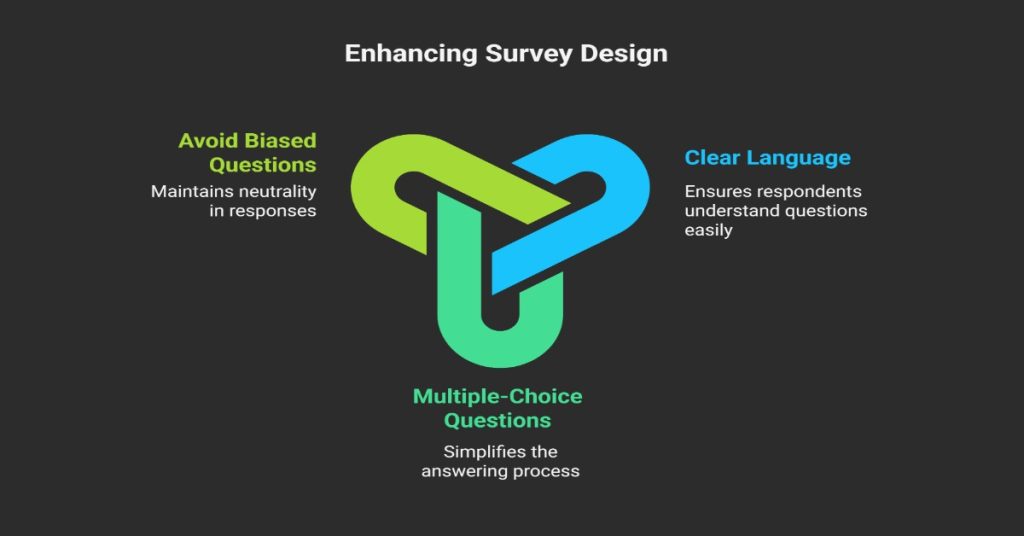Are you tired of conducting online surveys that don’t quite hit the mark? Do you struggle to get meaningful responses from your target audience? You’re not alone. Many businesses face challenges when it comes to targeting demographics in online surveys. But don’t worry, we’ve got you covered.
In this blog, we’ll discuss the importance of targeting demographics in online surveys and provide you with actionable strategies to get the most out of your survey efforts. Whether you’re a market researcher, business owner, or product developer, this guide will help you connect with your target audience and gather valuable insights.
Table of Contents
Why Targeting Demographics Matters?
Targeting demographics in online surveys is crucial for several reasons:
- Accurate representation: By targeting specific demographics, you can ensure that your survey responses accurately represent your target audience.
- Relevant insights: Targeting demographics helps you gather insights that are relevant to your business or product, allowing you to make informed decisions.
- Increased response rates: When you target the right demographics, you’re more likely to get responses from people who are interested in your topic, increasing your response rates.
Targeting Demographics
We’ve all been there – you spend hours crafting the perfect survey, only to find that your responses don’t quite match your target audience. Some common pain points in targeting demographics include:
- Difficulty reaching specific age groups: Older adults might not be as tech-savvy, while younger generations might be more difficult to reach through traditional methods.
- Limited geographic reach: Surveys might not reach people in specific regions or countries, limiting your insights to a particular area.
- Inaccurate self-reporting: Respondents might not accurately report their demographics, leading to skewed results.

Strategies for Targeting Demographics
So, how can you overcome these pain points and target demographics effectively? Here are some strategies to get you started:
1. Define Your Target Audience
Before you start crafting your survey, it’s essential to define your target audience. Who are the people you want to reach? What are their characteristics, interests, and behaviors? Create buyer personas or user profiles to help guide your survey design.
2. Use Demographic Screening Questions
Demographic screening questions help you identify whether respondents match your target audience. Ask questions like age, location, occupation, or income level to filter out respondents who don’t fit your target demographics.
3. Choose the Right Survey Distribution Channels
Different demographics respond to different survey distribution channels. For example:
- Social media: Reach younger adults and people with specific interests through social media platforms like Facebook, Twitter, or Instagram.
- Email lists: Use email lists to reach people who have shown interest in your product or service.
- Online panels: Partner with online panels to reach specific demographics, such as professionals or people with specific interests.

4. Use Incentives to Boost Response Rates
Incentives can motivate people to participate in your survey. Offer rewards that are relevant to your target audience, such as:
- Gift cards: Offer gift cards to popular retailers or restaurants.
- Discounts: Provide discounts on your product or service.
- Entry into a prize draw: Offer a chance to win a larger prize.
5. Keep Your Survey Short and Sweet
Long surveys can be overwhelming, especially for people with limited attention spans. Keep your survey short and to the point, focusing on the most important questions.
6. Use Mobile-Friendly Surveys
More people are accessing surveys on their mobile devices. Ensure that your survey is mobile-friendly and easy to complete on smaller screens.
7. Use Data Analytics to Identify Trends
Use data analytics tools to identify trends in your survey responses. This can help you identify patterns in specific demographics and adjust your targeting strategies accordingly.
Best Practices for Survey Design
When designing your survey, keep the following best practices in mind:
- Use clear and concise language: Avoid using jargon or technical terms that might confuse respondents.
- Use multiple-choice questions: Multiple-choice questions are easier to answer than open-ended questions.
- Avoid biased questions: Ensure that your questions are neutral and don’t lead respondents to a particular answer.

FAQs
Q: How do I determine my target audience for online surveys?
A: Define your target audience by creating buyer personas or user profiles, considering characteristics, interests, and behaviors.
Q: What are the most effective survey distribution channels?
A: The most effective channels depend on your target audience. Social media, email lists, and online panels are popular options.
Q: How can I increase response rates for my online survey?
A: Use incentives, keep your survey short and sweet, and use mobile-friendly design to increase response rates.
By implementing these strategies and best practices, you’ll be able to target demographics effectively and gather valuable insights from your online surveys. Happy surveying!
Read More
Tired of Empty Surveys? Key Strategies for Getting More People to Finish Yours
Top Strategies for Boosting Survey Participation
A Step-by-Step Guide to Using Survey Tools: Get Better Results Every Time
Conclusion
Targeting demographics in online surveys is crucial for gathering meaningful insights from your target audience. By defining your target audience, using demographic screening questions, and choosing the right survey distribution channels, you can increase response rates and get the most out of your survey efforts.
Remember to keep your survey short and sweet, use incentives to boost response rates, and use data analytics to identify trends. By following these strategies and best practices, you’ll be well on your way to conducting effective online surveys that provide valuable insights into your target audience.

